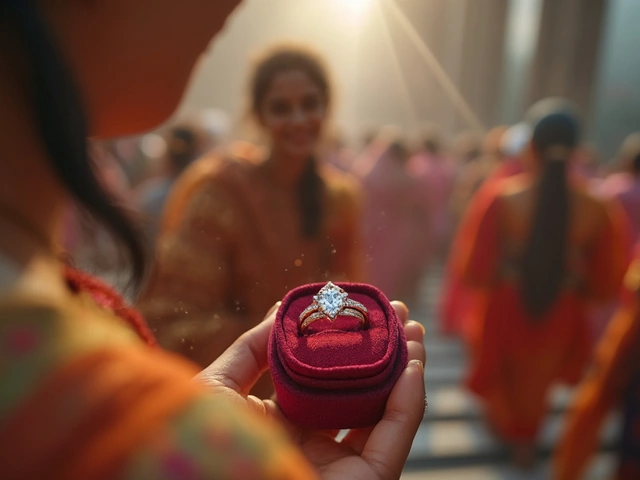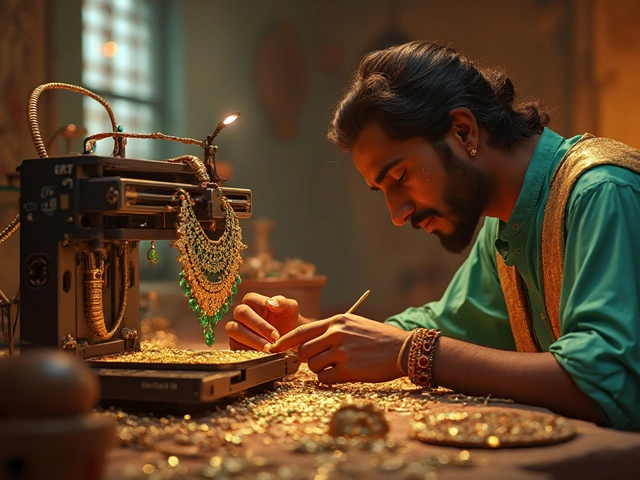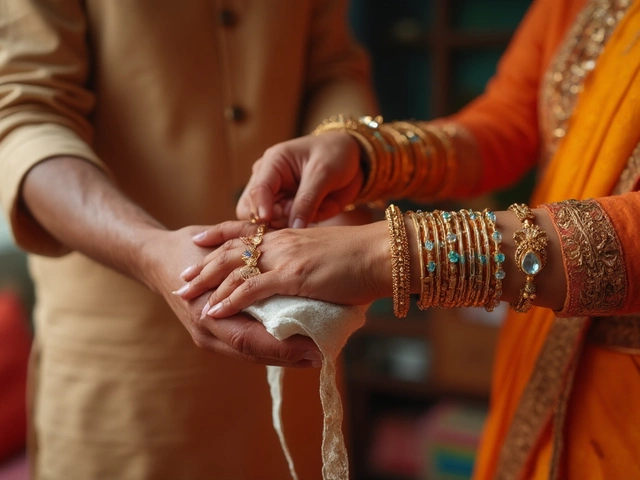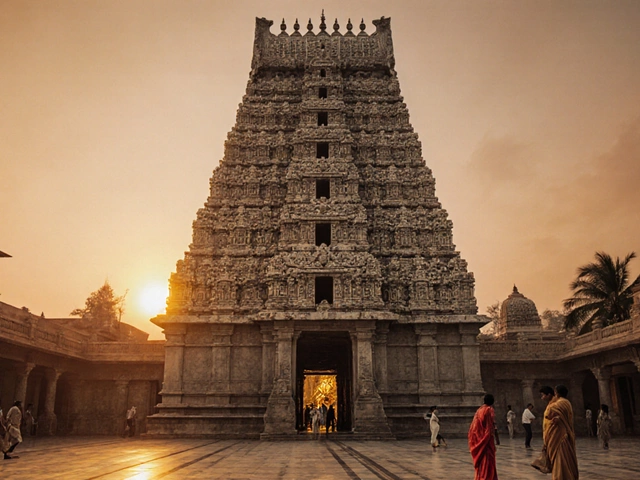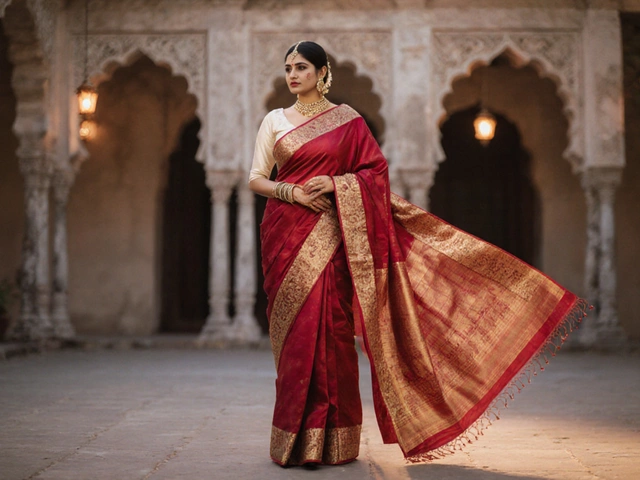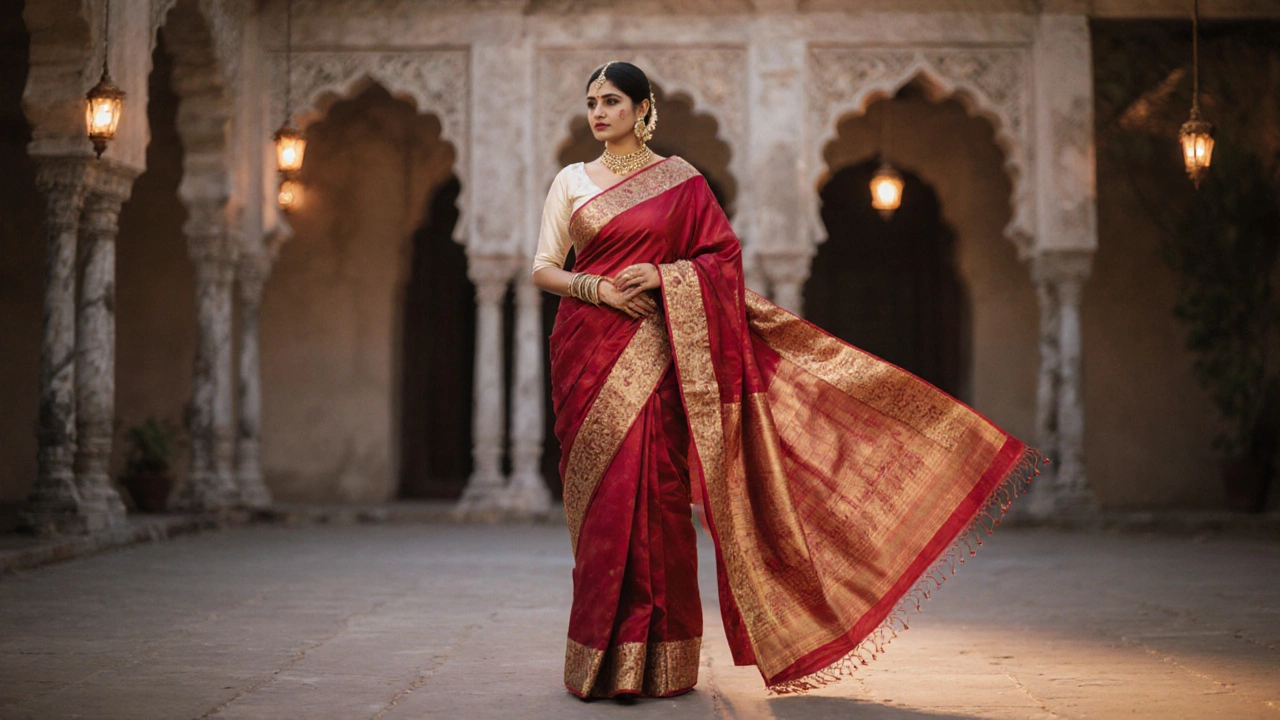
Pan-India Traditional Dress Explorer
Discover the five most widely-worn traditional Indian dresses and their regional significance. Click on any dress card to learn more!
Sari
Pan-IndiaThe timeless six-yard drape with endless styling options.
Salwar Kameez
Urban StapleComfort meets style in this versatile two-piece outfit.
Lehenga
Celebration DressThe dazzling flared skirt perfect for weddings and celebrations.
Mekhela Chador
Northeast HeritageThe elegant silk drape of Assam with vibrant motifs.
Kurti & Anarkali
Modern FusionTraditional embroidery meets contemporary cuts in this hybrid style.
When you think of Indian dresses are the classic clothing styles that you’ll see from Delhi to Chennai, Kolkata to Kochi, the Indian dresses that dominate the scene include a handful of timeless silhouettes. These garments have traveled across languages, cuisines and climates, becoming familiar faces at weddings, festivals and everyday life. Below we break down the five most widely‑worn dresses, why they feel at home everywhere, and how you can wear them today.
1. The Sari - A Flagship of Pan‑Indian Elegance
Sari is a six‑yard unstitched drape that folds around the body in countless styles. Though each state boasts its own weave - Banarasi from Uttar Pradesh, Kancheepuram from Tamil Nadu, Assam’s Muga - the silhouette stays the same, making the sari instantly recognizable nationwide. Its versatility lets you go from a casual office look with a simple cotton drape to a lavish red wedding ensemble with silk, gold thread and heavy borders.
- Typical fabric: silk, cotton, chiffon, georgette
- Key features: pleated petticoat, pallu (loose end), blouse
- Common occasions: festivals (Diwali, Navratri), weddings, formal events
2. Salwar Kameez - Comfort Meets Style
Salwar Kameez is a two‑piece outfit comprising a tunic (kameez) and loose pants (salwar) that first rose to prominence in the Punjab region. Today it’s a staple in metros, college campuses and street markets alike. The outfit adapts easily: a short kurtis for daytime, a heavily embroidered version for evening functions, and even a modern jumpsuit‑style cut for urban fashion.
- Fabric choices: cotton for everyday wear, silk for celebrations
- Regional twists: Patiala salwar with a wide‑leg cut, straight‑cut churidar in the north
- Styling tip: Pair with a dupatta draped over the shoulders for a graceful finish
3. Lehenga - The Celebration Dress
Lehenga is a long, flared skirt teamed with a fitted blouse (choli) and often a dupatta. While its roots are in Rajasthan and Gujarat, the lehenga’s dazzling appearance has made it a go‑to choice for weddings across India, from the south’s Mysore silk lehengas to the east’s Bengali white‑gold ensembles.
- Fabric: silk, brocade, net with heavy embellishment
- Popular colors: red, maroon, royal blue, pastel pink
- Fit tip: Choose a high‑waist cut for a slimming effect
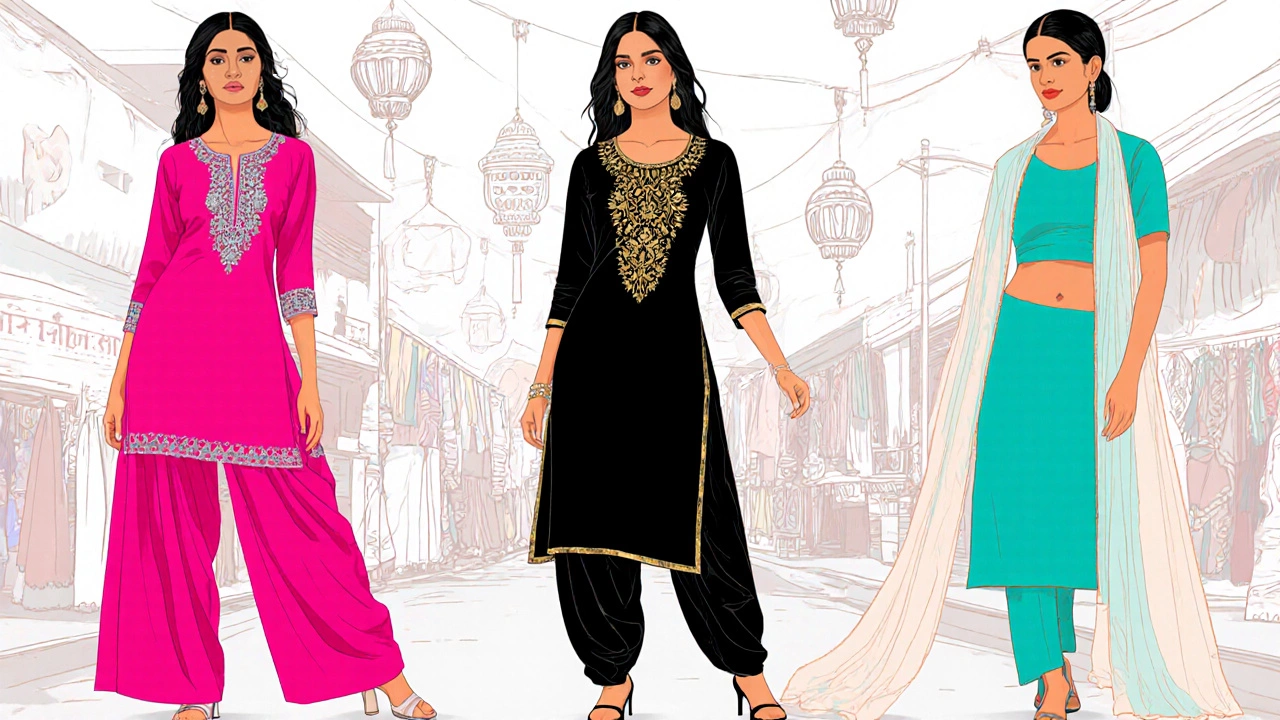
4. Mekhela Chador - The Northeast’s Signature
Mekhela Chador is a two‑piece silk drape worn by women in Assam, featuring a wrapped lower skirt (mekhela) and a flowing upper shawl (chador). Though it hails from the northeast, its elegant sheen and vibrant motifs have been embraced by fashion designers in Delhi and Mumbai, popping up at upscale boutiques and runway shows.
- Key material: Muga silk, known for its natural gold luster
- Typical patterns: traditional motifs like the ‘jaapi’ hat and tea plant leaves
- Occasions: weddings, cultural festivals, formal gatherings
5. Kurti & Anarkali - The Modern Hybrid
Kurti is a short, waist‑length top that can be paired with leggings, jeans or a churidar, while Anarkali is a frock‑style dress that flares from the waist and falls to the ankle. Both garments trace back to Mughal courts, yet they have become everyday wear in urban India because they blend traditional embroidery with contemporary cuts.
- Fabric: cotton for daily use, georgette or silk for events
- Styling idea: Layer a kurti over a long shirt for a chic, layered look
- Versatility: Works for office, brunch, and evening parties
Comparison: Pan‑India Reach vs. Regional Roots
| Dress | Pan‑India Presence | Strongest Regional Origin | Typical Occasion |
|---|---|---|---|
| Sari | Very high - seen in every state | West Bengal (Baluchari) | Weddings, festivals, daily wear |
| Salwar Kameez | High - everyday streetwear in cities | Punjab (Patiala) | Casual, office, celebrations |
| Lehenga | Medium - popular at weddings nationwide | Rajasthan (Bandhani) | Weddings, receptions |
| Mekhela Chador | Growing - niche but expanding | Assam | Weddings, cultural events |
| Kurti / Anarkali | High - street fashion across metros | Mughal courts (North India) | Office, parties, casual outings |
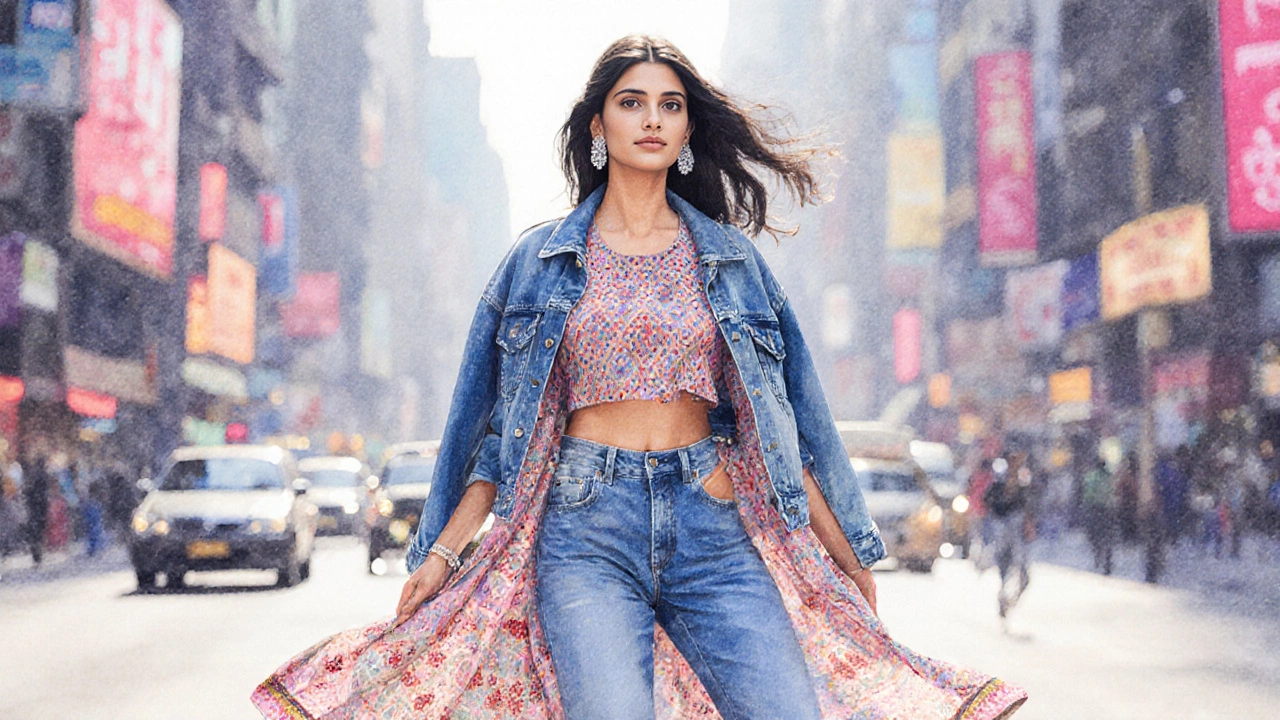
Styling the Classics for Today
Even if you’re not attending a traditional ceremony, these dresses adapt well to modern wardrobes. Pair a lightweight cotton sari with a fitted blazer for a power‑dressing look, or wear a short kurti with high‑waist jeans and statement earrings for a weekend vibe. The key is to balance the silhouette’s heritage with contemporary accessories.
- Footwear: Juttis for saris, mojaris for lehengas, sneakers for kurtis
- Jewellery: Switch heavy gold for delicate silver or costume pieces for daily wear
- Layering: Add a denim jacket over a salwar‑kameez for an edgy twist
Where to Find Authentic Pieces
Online marketplaces such as Craftsvilla, Fabindia and IndianRoots curate verified artisans, while city‑center boutiques in Delhi’s Chandni Chowk or Mumbai’s Colaba Causeway offer hand‑picked selections. If you prefer a personal touch, look for local tailors who specialize in regional weaves - they can customize fabric, length and embellishment to your exact taste.
- Set a budget - saris run from $30 for cotton to $2,000 for silk
- Check authenticity - ask for the weave’s label (e.g., Banarasi, Kanchipuram)
- Try before you buy - many e‑stores have free return policies for fit issues
Common Pitfalls and How to Avoid Them
New buyers often over‑pay for low‑quality replicas or choose the wrong draping style for their body type. Measure your height before buying a sari; a taller person may need longer fabrics to achieve an elegant pleat. For salwar‑kameez, avoid overly tight pants that restrict movement - a slight stretch in the fabric solves the problem.
- Beware of “handloom” labels that hide mass‑produced cotton
- Don’t ignore care instructions - silk needs dry cleaning, but many cotton saris are machine‑washable
- Match colors to your skin tone: cool undertones look great in emerald or sapphire, warm undertones shine in maroon or mustard
Frequently Asked Questions
Which Indian dress is best for everyday office wear?
A cotton or linen salwar kameez with a modest neckline works well in most offices. Pair with simple flats and minimal jewellery for a polished look.
Can I wear a sari to a casual brunch?
Absolutely. Choose a lightweight chiffon or georgette sari in bright colors, drape it in the “Gujarati” style for ease, and pair with a denim jacket for a relaxed vibe.
What is the difference between a lehenga and a ghagra?
Both refer to a flared skirt, but “ghagra” is the traditional term used in Rajasthan and Gujarat, often paired with a short blouse and odhani. “Lehenga” is the broader term used across India, commonly accompanied by a longer dupatta and heavier embroidery.
How do I care for a silk sari?
Dry‑cleaning is safest, but if you prefer hand‑wash, use cold water with a mild detergent, soak briefly, and lay flat to dry away from sunlight.
Where can I buy authentic Mekhela Chador online?
Websites like Assam Handloom and IndianRoots specialize in certified Muga silk Mekhela Chadors, offering detailed product descriptions and authenticity certificates.

